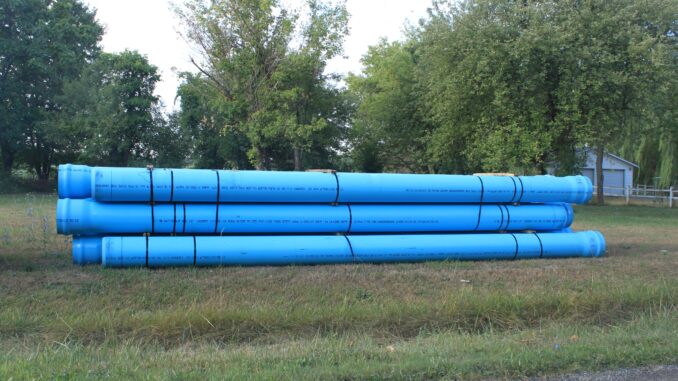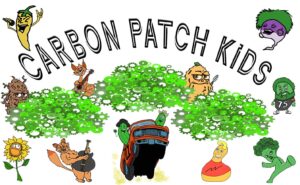
Polyvinyl chloride (PVC) is one of the most widely used plastics in the world today. It is a versatile, low-cost material that has many applications, including pipe and tubing, window frames, flooring, and roofing.
PVC is also commonly used in medical and industrial applications, as well as for packaging and food products. PVC is strong, durable, and resistant to corrosion. It is also one of the most economical synthetic plastics available.
In this article, we will explore the process of how PVC plastic is made. We will look at the raw materials used, the manufacturing processes involved, and the environmental concerns associated with PVC production. We will also discuss the various uses for PVC and the advantages and disadvantages of this material.
Raw materials
PVC is made up of two main components: 57% chlorine and 43% carbon. The chlorine is derived from common salt and the carbon is derived from oil or natural gas. These raw materials are then combined with other additives to create a variety of PVC products. These additives can include plasticizers, stabilizers, lubricants, pigments, fillers, and fire retardants.
Manufacturing process
The manufacturing process for PVC involves several steps. First, the raw materials are mixed together in large tanks. The mixture is then heated and pressurized to form a thick, viscous solution. This solution is then forced through a die, which shapes the PVC into pellets. These pellets are then cooled, dried, and screened to remove any impurities.
Next, the pellets are fed into an extruder, where they are heated and melted. At the same time, other additives are added to the mix, such as plasticizers and stabilizers. The molten PVC is then forced through a die to create the desired product. This product can be shaped into various forms, such as pipe, tubing, window frames, flooring, and roofing.
Environmental concerns
The production of PVC plastic is associated with several environmental concerns. The chlorine used in the manufacturing process can be released into the atmosphere, causing air pollution. In addition, the burning of PVC can release toxic chemicals into the air, such as chlorine and dioxins.
Additionally, PVC production requires large amounts of energy and produces significant amounts of waste. The waste can be difficult to dispose of, as it can contain hazardous chemicals. Moreover, certain additives used in the production of PVC, such as phthalates, can be toxic to humans and wildlife.
Uses of PVC
PVC is a versatile material with a wide range of uses. It is commonly used in construction, as it is strong, durable, and resistant to corrosion. PVC is also widely used in the medical industry, as it is non-toxic and can be easily sterilized. It is also used in packaging and food containers, as it is impermeable to moisture and gases.
PVC is also used in the automotive industry in the form of hoses and other components. It is also used in the manufacturing of electrical wiring and cables, as it is a good insulator and resistant to fire.
Advantages and Disadvantages
PVC has many advantages over other plastics. It is strong, durable, and resistant to corrosion, making it ideal for use in construction. It is also non-toxic, lightweight, and easy to shape into various forms. In addition, PVC is cost-effective and can be recycled.
However, there are some drawbacks to PVC. It is difficult to dispose of, as it can contain hazardous chemicals. It also requires large amounts of energy to produce and can release toxic chemicals into the air when burned. Additionally, certain additives used in the production of PVC can be toxic to humans and wildlife.
Conclusion
PVC is a versatile and cost-effective plastic that has many uses, from construction to medical applications. It is strong, durable, and resistant to corrosion, making it an ideal material for a variety of applications. However, there are some environmental concerns associated with the production of PVC, such as air pollution and the release of toxic chemicals.
In conclusion, PVC is a widely used and versatile plastic with many advantages and some drawbacks. Before choosing to use PVC, it is important to consider the environmental impact and the potential health risks associated with its production and use.
Click on picture for America’s Crate! Check out these Amazing American Environmental Entrepreneurs! Don’t forget that the promo code OTIS unlocks big big savings!

Submit your Article Ideas to The Crude Life! Email studio@thecrudelife.com
About The Crude Life
Award winning interviewer and broadcast journalist Jason Spiess and Content Correspondents engage with the industry’s best thinkers, writers, politicians, business leaders, scientists, entertainers, community leaders, cafe owners and other newsmakers in one-on-one interviews and round table discussions.
The Crude Life has been broadcasting on radio stations since 2012 and posts all updates and interviews on The Crude Life Social Media Network.
Everyday your story is being told by someone. Who is telling your story? Who are you telling your story to?
#thecrudelife promotes a culture of inclusion and respect through interviews, content creation, live events and partnerships that educate, enrich, and empower people to create a positive social environment for all, regardless of age, race, religion, sexual orientation, or physical or intellectual ability.
Sponsors, Music and Other Show Notes

Studio Sponsor: The Industrial Forest
The Industrial Forest is a network of environmentally minded and socially conscious businesses that are using industrial innovations to build a network of sustainable forests across the United States.
Weekly Sponsor: Stephen Heins, The Practical Environmentalist
Historically, Heins has been a writer on subjects ranging from broadband and the US electricity grid, to environmental, energy and regulatory topics.
Heins is also a vocal advocate of the Internet of Everything, free trade, and global issues affecting the third of our planet that still lives in abject poverty.
Heins is troubled by the Carbon Tax, Cap & Trade, Carbon Offsets and Carbon Credits, because he questions their efficacy in solving the climate problem, are too gamable by rent seekers, and are fraught with unreliable accounting.
Heins worries that climate and other environmental reporting in the US and Europe has become too politicized, ignores the essential role carbon-based energy continues to play in the lives of billions, demonizes the promise and practicality of Nuclear Energy and cheerleads for renewable energy sources that cannot solve the real world problems of scarcity and poverty.
Look at what’s happened to me.
I can’t believe it myself.
Suddenly I’m down at the bottom of the world.
It should have been somebody else
Believe it or not, I’m walking on air.
I never thought I could feel so free-e-e.
Barterin’ away with some wings at the fair
Who could it be?
Believe it or not it’s just me
The Last American Entrepreneur
Click here of The Last American Entrepreneur’s website

Studio Email and Inbox Sponsor: The Carbon Patch Kids
The Carbon Patch Kids are a Content Story Series targeted for Children of All Ages! In the world of the Carbon Patch Kids , all life matters and has a purpose. Even the bugs, slugs, weeds and voles.
The Carbon Patch Kids love adventures and playing together. This interaction often finds them encountering emotional experiences that can leave them confused, scared or even too excited to think clearly!
Often times, with the help of their companions, the Carbon Patch Kids can reach a solution to their struggle. Sometimes the Carbon Patch Kids have to reach down deep inside and believe in their own special gift in order to grow.
The caretakers of Carbon Patch Kids do their best to plant seeds in each of the Carbon Patch Kids so they can approach life’s problems with a non-aggressive, peaceful and neighborly solution.
Carbon Patch Kids live, work and play in The Industrial Forest.
Click here for The CarbonPatchKids’ website

Featured Music: Alma Cook
Click here for Alma Cook’s music website
Click here for Alma Cook’s day job – Cook Compliance Solutions
For guest, band or show topic requests, email studio@thecrudelife.com
Spread the word. Support the industry. Share the energy.




